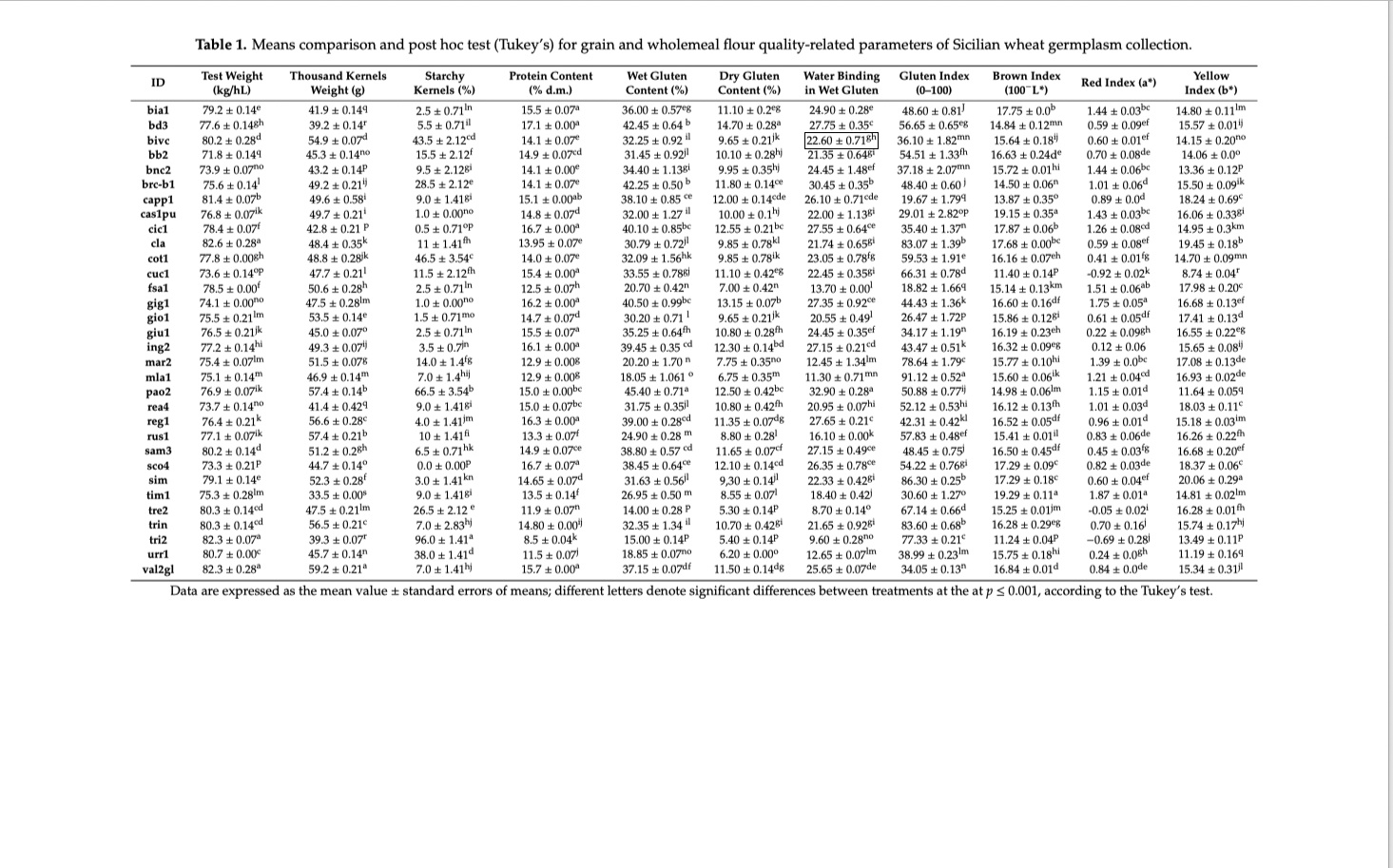Abstract: During the XX Century, the widespread use of modern wheat cultivars drastically reduced the cultivation of ancient landraces, which nowadays are confined to niche cultivation areas. Several durum wheat landraces adapted to the extreme environments of the Mediterranean region, are still being cultivated in Sicily, Italy. Detailed knowledge of the genetic diversity of this germplasm could lay the basis for their efficient management in breeding programs, for a wide-range range of traits. The aim of the present study was to characterize a collection of durum wheat landraces from Sicily, using single nucleotide polymorphisms (SNP) markers, together with agro-morphological, phenological and quality-related traits. Two modern cv. Simeto, Claudio, and the hexaploid landrace, Cuccitta, were used as outgroups. Cluster analysis and Principal Coordinates Analysis (PCoA) allowed us to identify four main clusters across the analyzed germplasm, among which a cluster included only historical and modern varieties. Likewise, structure analysis was able to distinguish the ancient varieties from the others, grouping the entries in seven cryptic genetic clusters. Furthermore, a Principal Component Analysis (PCA) was able to separate the modern testers from the ancient germplasm. This approach was useful to classify and evaluate Sicilian ancient wheat germplasm, supporting their safeguard and providing a genetic fingerprint that is necessary for avoiding commercial frauds to sustaining the economic profits of farmers resorting to landraces cultivation. (High-Throughput Genotype, Morphology, and Quality Traits Evaluation for the Assessment of Genetic Diversity of Wheat Landraces from Sicily. Maria Carola Fiore , Francesco Mercati, Alfio Spina, Sebastiano Blangiforti, Gianfranco Venora, Matteo Dell’Acqua, Antonio Lupini, Giovanni Preiti , Michele Monti, Mario Enrico Pè and Francesco Sunseri. 30 aprile 2019.)
Table 1
List of grains examined

Table 2
Characteristics of the grains examined


